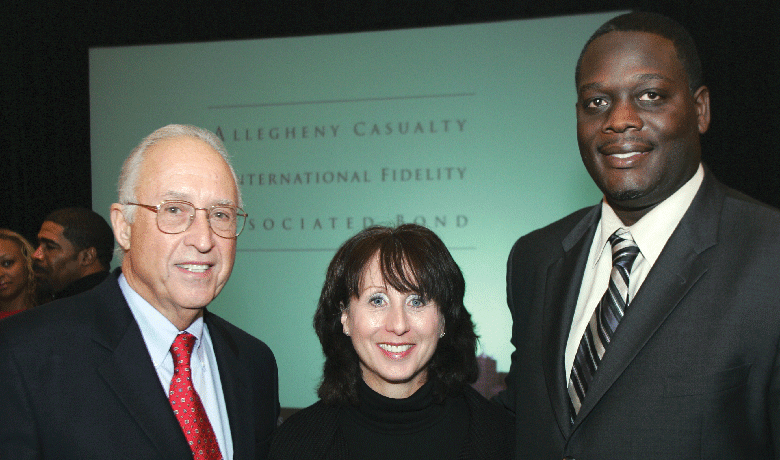POST-CONVICTION BONDS
By Sue Doyle

Jerry Watson, Judge Nancy Russo and Dallas District Attorney Craig Watkins
Get-tough-on-crime laws have packed prisons to capacity and do nothing to rehabilitate offenders. Post-conviction bonds could change all that.
With the help of bail agents, post-conviction bonds could be issued to eligible inmates who are then connected to the criminal justice system through the bonds and guaranteed through surety companies.
Once outside of prison, they are guided through outside programs to learn trades, job skills and lead productive lives. These new steps could lower recidivism rates and reduce prison populations.
Post-conviction bonds are a low-cost solution to prison overcrowding that judges, lawyers and legislatures across the country are considering to mend a system that is badly in need of repairs, said Jerry Watson, AIA’s Chief Legal Officer.
“One thing is certain, if we keep doing what we’re doing, we’re going to keep getting what we’re getting,” said Watson.
During a working lunch at AIA’s Southern Midwest Region Agents Conference, over 200 bail agents listened to arguments for post-conviction bonds from Watson, Judge Nancy Margaret Russo of the Common Pleas Court of Cuyahoga County, Ohio; Texas Sen. Royce West and Craig Watkins, Dallas County District Attorney.
Having spent years working with the criminal justice system, the officials all agreed that the system is in dire need of a change, because it’s headed in a direction that has not stopped crime. Today, there are more than 2.5 million incarcerated men and women – a three percent rise in just one year, Watson said.
Although prison populations are bursting at the seams in Ohio, judges are reluctant to release prisoners early, said Russo.
During 2006, there were 100 early releases out of 17,000 indictments in Cuyahoga County.
After leaving prison, inmates come under the probation departments, which enforce rules. But probation officers do not go after those released when something goes wrong. Instead, its law enforcement that shows up, but only when ex-prisoners are caught committing another crime. “That lack of accountability has made judges uncomfortable,” Russo said.
But the outcomes change when bail bondsmen are involved, because they include sureties.
“I have you in the middle to help me find this person,” Russo said.
In addition, families of the inmates are involved because they are usually the ones putting up the money to release their loved ones from behind bars.
At the same time, they would incur a financial loss if the person does not follow the rules. So these family members or friends have a vested interest in helping the released inmate follow the rules, Russo said. This extra layer of involvement also makes judges comfortable with post-conviction bonds.
“The attitude can’t always be lock everybody up, because we know that 99 percent of the people come home,” Russo said. “And we do nothing on the back end to help with that transition.”
The need to take a new approach with criminals and prisons has begun post-conviction bond conversations across the country.
In Texas, the popular attitude to crime was to construct more prisons. But the rhetoric has changed after crime rates have continued to soar and offenders have been returned to prisons.
“Even if we build more prisons, 10 years from now, we’ll be faced with these same problems,” said Watkins. “We have to incorporate different philosophies, different solutions and incorporate rehabilitation.”
“Most tragic in this era of tough crime laws are the innocent people who’ve been locked up,” Watkins said.
In the end, it benefits society the most to look at prison treatment from a smart perspective.
“We know tough doesn’t work. We know soft doesn’t work,” said Watkins. “Let’s be smart about it.”
